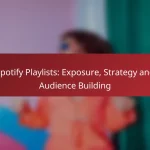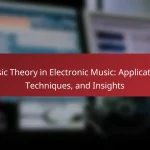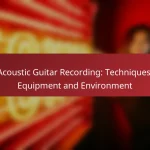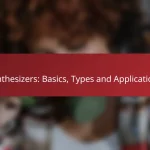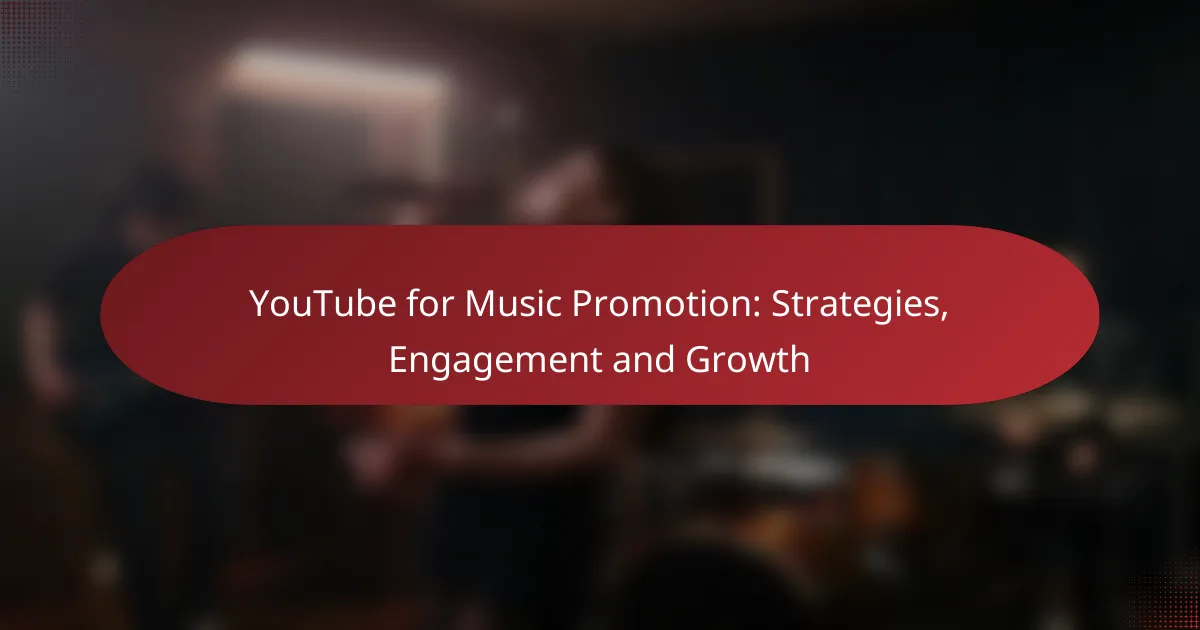A music marketing plan is crucial for effectively promoting an artist or album, encompassing steps such as defining the target audience, setting goals, and developing a content strategy. By leveraging various tools and platforms, artists can enhance their outreach and engagement, ultimately maximizing their audience reach. Utilizing social media for direct fan interaction and targeted advertising can significantly boost visibility and foster a growing fanbase.
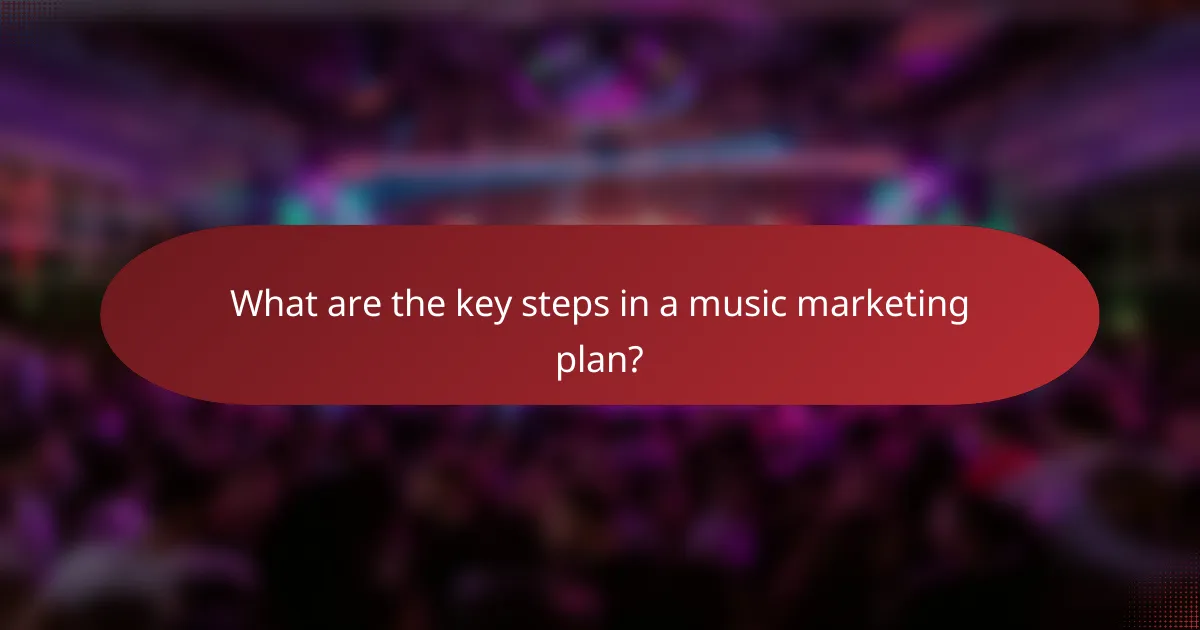
What are the key steps in a music marketing plan?
A music marketing plan involves several essential steps to effectively promote an artist or album. These steps include defining the target audience, setting marketing goals, creating a budget, developing a content strategy, and choosing appropriate marketing channels.
Define target audience
Identifying the target audience is crucial for a successful music marketing plan. This involves understanding the demographics, interests, and behaviors of potential listeners, such as age, location, and musical preferences.
Consider creating audience personas to visualize your ideal fans. For example, a pop artist might target young adults aged 18-24 who are active on social media platforms like Instagram and TikTok.
Set marketing goals
Establishing clear marketing goals helps measure the effectiveness of your efforts. Goals can range from increasing social media followers to boosting album sales or concert attendance.
Use the SMART criteria—Specific, Measurable, Achievable, Relevant, Time-bound—to formulate your goals. For instance, aim to increase streaming numbers by 20% within three months.
Create a budget
A well-defined budget is essential for allocating resources effectively. Consider all potential expenses, including advertising, promotional materials, and event costs.
For a small artist, a budget of a few hundred to a few thousand dollars may suffice for initial marketing efforts. Track spending closely to ensure you stay within your limits while maximizing impact.
Develop a content strategy
A robust content strategy outlines what type of content will be created and shared to engage your audience. This could include music videos, behind-the-scenes footage, and social media posts.
Plan a content calendar to maintain consistency. For example, schedule weekly posts leading up to an album release, mixing promotional content with engaging stories to keep fans interested.
Choose marketing channels
Selecting the right marketing channels is vital for reaching your target audience effectively. Common channels include social media, email newsletters, and music streaming platforms.
Evaluate where your audience spends their time. For instance, if your target demographic is primarily on TikTok, focus your efforts there to create viral content that resonates with them.
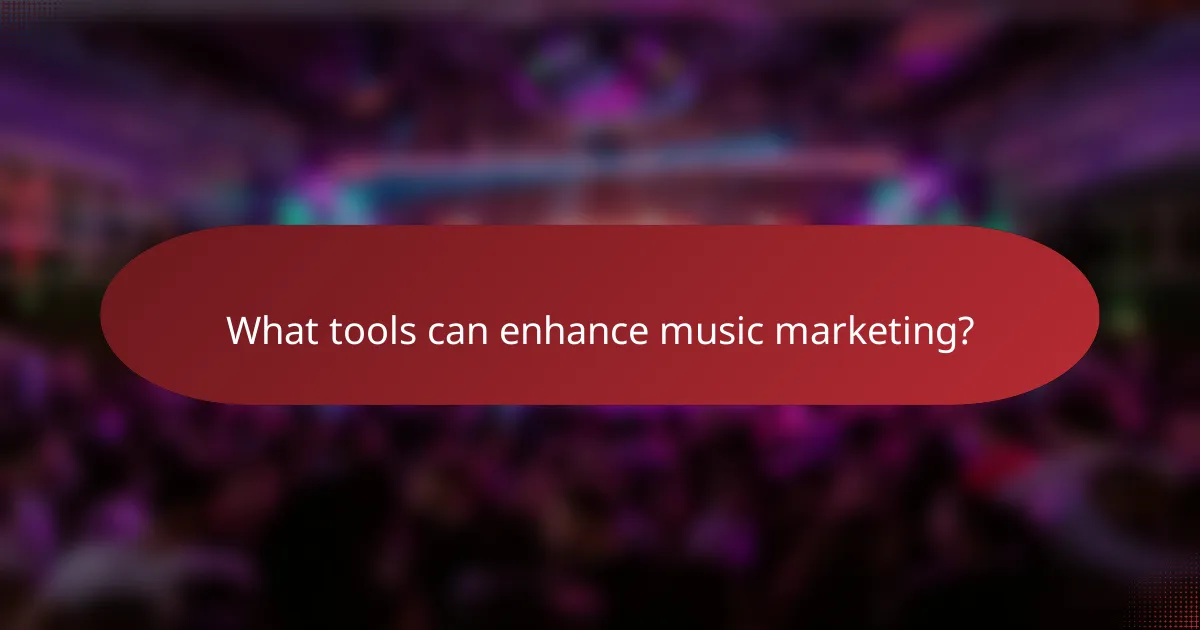
What tools can enhance music marketing?
Several tools can significantly enhance music marketing by improving outreach, engagement, and data analysis. Utilizing the right combination of social media platforms, email marketing software, analytics tools, and music distribution services can streamline your promotional efforts and maximize your audience reach.
Social media platforms
Social media platforms are essential for music marketing as they allow artists to connect directly with fans and promote their music. Platforms like Instagram, Facebook, and TikTok enable artists to share content, engage with followers, and create viral moments that can boost visibility.
When using social media, focus on creating authentic content that resonates with your audience. Regularly posting updates, behind-the-scenes footage, and engaging stories can help maintain interest and build a loyal fan base. Consider using targeted ads to reach specific demographics, which can be particularly effective for promoting new releases or events.
Email marketing software
Email marketing software is crucial for maintaining direct communication with fans. Tools like Mailchimp or Constant Contact allow artists to create newsletters, share updates, and promote new releases or merchandise effectively.
To maximize the impact of your email campaigns, segment your audience based on their preferences and engagement levels. Personalizing emails can lead to higher open rates and conversions. Aim to send regular updates, but avoid overwhelming your subscribers with too many messages.
Analytics tools
Analytics tools provide valuable insights into your marketing efforts, helping you understand audience behavior and engagement. Platforms like Google Analytics and social media insights can track how well your content performs and where your audience is coming from.
Regularly reviewing analytics data can inform your marketing strategy. Look for trends in what types of content generate the most engagement and adjust your approach accordingly. Setting specific goals and measuring progress against them can also help you stay focused on your marketing objectives.
Music distribution services
Music distribution services are vital for getting your music onto streaming platforms like Spotify, Apple Music, and Amazon Music. Services such as DistroKid or TuneCore simplify the process of distributing your tracks and collecting royalties.
When choosing a distribution service, consider factors like fees, speed of release, and the platforms they distribute to. Some services offer additional marketing tools, which can be beneficial for promoting your music once it’s released. Ensure you read the terms regarding royalties and rights to avoid any surprises down the line.
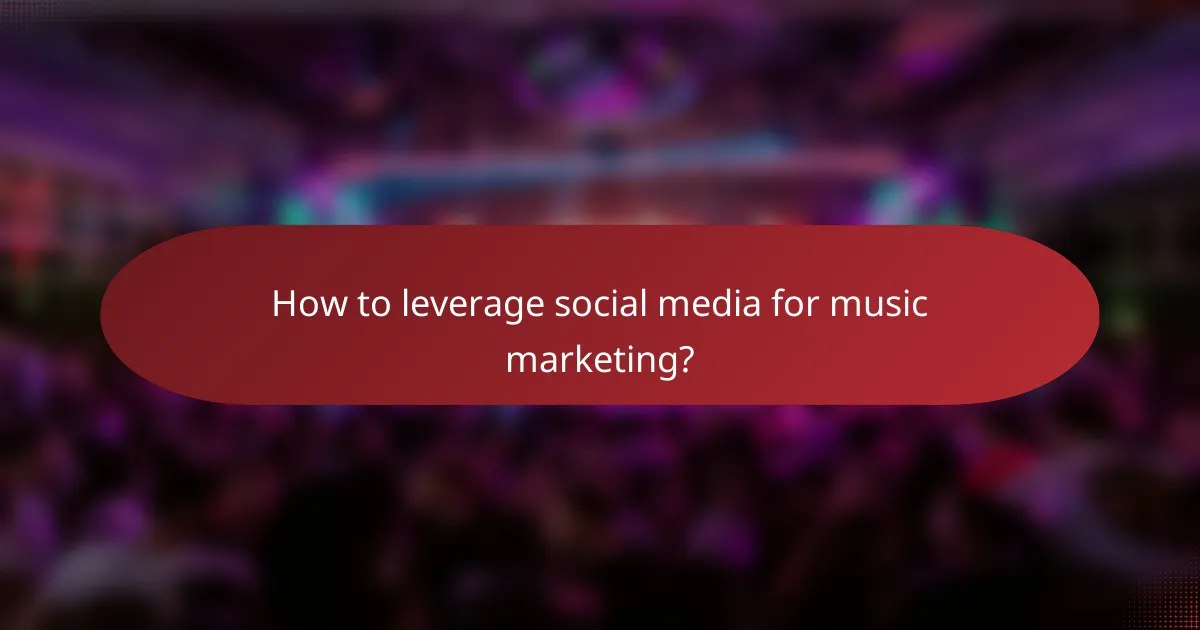
How to leverage social media for music marketing?
Leveraging social media for music marketing involves using platforms to connect with fans, share content, and promote music effectively. By engaging audiences and utilizing targeted advertising, artists can enhance their visibility and grow their fanbase.
Engage with fans
Engaging with fans on social media is crucial for building a loyal following. Respond to comments, ask questions, and create polls to encourage interaction. This two-way communication fosters a sense of community and makes fans feel valued.
Consider hosting live Q&A sessions or virtual concerts to deepen connections. These events can create excitement and provide fans with exclusive experiences that strengthen their loyalty to your music.
Share behind-the-scenes content
Sharing behind-the-scenes content allows fans to see the creative process and personal side of the artist. Post videos or photos from rehearsals, studio sessions, or daily life to create a more intimate connection with your audience.
This type of content not only humanizes the artist but also builds anticipation for upcoming releases. Fans appreciate authenticity, so be genuine in your storytelling and share both successes and challenges.
Utilize paid advertising
Utilizing paid advertising on social media can significantly boost your reach and engagement. Platforms like Facebook, Instagram, and TikTok offer targeted ad options that allow you to reach specific demographics based on interests, location, and behaviors.
Start with a modest budget to test different ad formats, such as video ads or carousel ads showcasing multiple tracks. Monitor performance metrics to refine your strategy and maximize your return on investment.

What are effective strategies for music promotion?
Effective music promotion strategies include leveraging social media, collaborating with influencers, hosting virtual events, and offering exclusive content. These approaches help artists reach wider audiences and engage fans in meaningful ways.
Collaborate with influencers
Collaborating with influencers can significantly boost your music’s visibility. Influencers have established audiences that trust their recommendations, making them valuable partners for promoting your tracks.
To maximize impact, choose influencers whose brand aligns with your music style. Consider micro-influencers, as they often have higher engagement rates and can connect with niche audiences effectively.
When working with influencers, provide them with clear guidelines and creative freedom to present your music authentically. This can lead to more genuine promotion and better results.
Host virtual events
Hosting virtual events, such as live-streamed concerts or Q&A sessions, allows you to connect directly with fans regardless of location. These events can create a sense of community and excitement around your music.
Utilize platforms like Instagram Live, Facebook Live, or Twitch to reach your audience. Promote the event in advance through social media and email newsletters to maximize attendance.
Consider offering interactive elements, such as fan polls or giveaways during the event, to enhance engagement and encourage participation.
Offer exclusive content
Offering exclusive content, such as behind-the-scenes footage, early access to new releases, or special merchandise, can incentivize fans to engage more deeply with your music. This strategy fosters loyalty and encourages sharing among fans.
Use platforms like Patreon or Bandcamp to distribute exclusive content. This not only generates revenue but also builds a dedicated fanbase willing to support your work.
Make sure to promote the exclusivity of the content across your channels, emphasizing that it’s available for a limited time or only to subscribers, to create urgency and excitement.
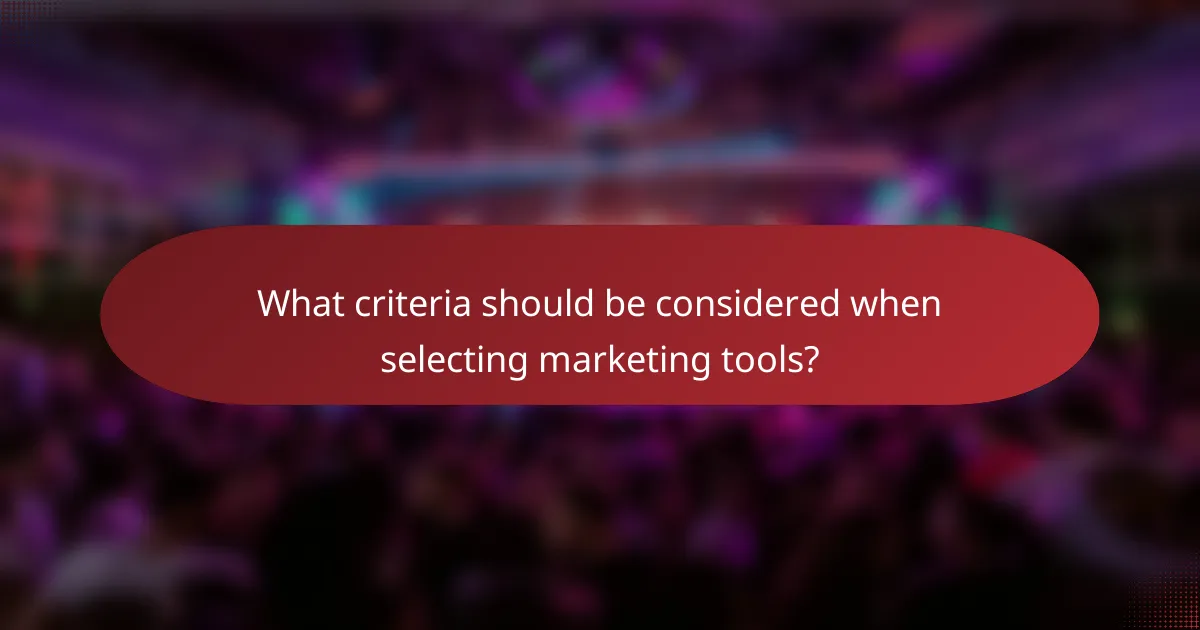
What criteria should be considered when selecting marketing tools?
When selecting marketing tools for music promotion, consider factors such as budget, ease of use, and integration with existing systems. These criteria will help ensure that the tools enhance your marketing efforts without causing unnecessary complications or expenses.
Budget constraints
Budget constraints are crucial when choosing marketing tools. Determine how much you can allocate for tools, keeping in mind that costs can vary widely from free options to premium services that may charge monthly fees in the low hundreds of USD.
Consider prioritizing tools that offer a good return on investment. For instance, if a tool can help you reach a larger audience or increase sales significantly, it may justify a higher cost. Always look for tools that provide flexible pricing plans to accommodate changes in your budget.
User-friendliness
User-friendliness is essential for effective marketing. Choose tools that have intuitive interfaces and require minimal training, as this will save time and reduce frustration. A tool that is easy to navigate will allow you to focus on your marketing strategies rather than getting bogged down in technical details.
Look for tools that offer robust customer support and resources, such as tutorials or community forums. This can be particularly helpful if you encounter challenges while using the tool. A user-friendly tool can significantly enhance your productivity and overall marketing effectiveness.
Integration capabilities
Integration capabilities refer to how well a marketing tool can connect with other platforms you are using. Tools that easily integrate with social media, email marketing, and analytics platforms can streamline your workflow and enhance your marketing efforts.
When evaluating tools, check for compatibility with your existing systems. For example, if you use a specific CRM or email service, ensure that the marketing tool can sync data seamlessly. This integration can save time and improve the accuracy of your marketing campaigns by providing a unified view of your audience.
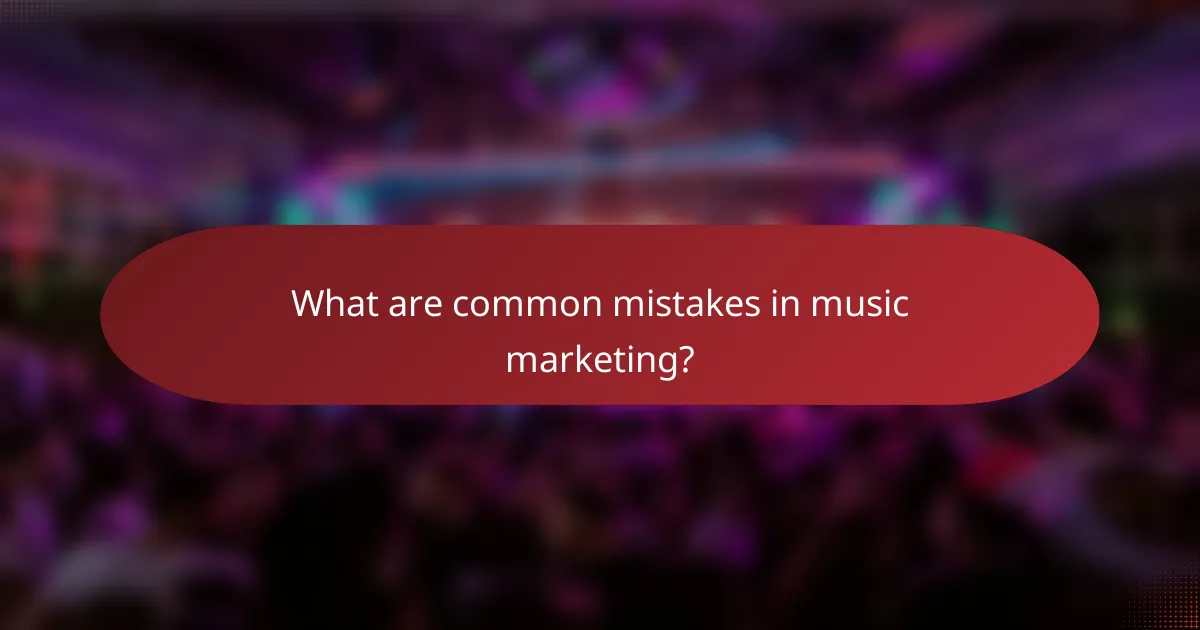
What are common mistakes in music marketing?
Common mistakes in music marketing include neglecting audience engagement, failing to utilize social media effectively, and not having a clear brand identity. These errors can hinder an artist’s ability to connect with fans and promote their music successfully.
Neglecting audience engagement
One major mistake is overlooking the importance of engaging with your audience. Artists should actively interact with fans through social media, live streams, and events to build a loyal community. Ignoring feedback or failing to respond to messages can lead to a disconnect.
To improve engagement, consider hosting Q&A sessions or sharing behind-the-scenes content. This personal touch can enhance fan loyalty and encourage word-of-mouth promotion.
Failing to utilize social media effectively
Many artists do not maximize their social media potential, which is crucial for music marketing today. Each platform has unique features that can be leveraged, such as Instagram Stories for updates or TikTok for viral challenges. Not tailoring content to fit these platforms can result in missed opportunities.
Focus on creating visually appealing content and engaging posts that resonate with your target audience. Regularly analyze your social media metrics to understand what works best and adjust your strategy accordingly.
Not having a clear brand identity
A lack of a clear brand identity can confuse potential fans and dilute marketing efforts. Artists should define their unique sound, image, and message to create a cohesive presence across all platforms. This clarity helps in attracting the right audience and establishing a memorable impression.
To develop your brand identity, consider your musical influences, visual aesthetics, and the story you want to tell. Consistency in these areas will strengthen your marketing and make it easier for fans to connect with you.
